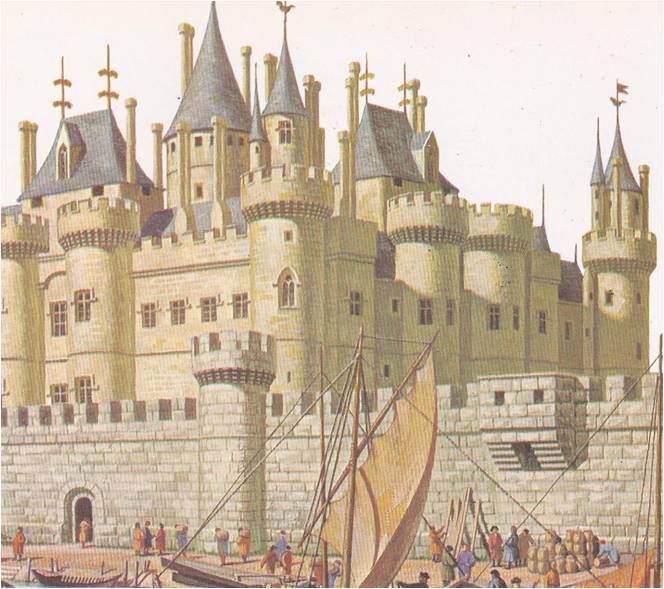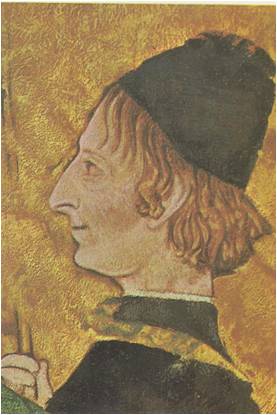In March of 1796, a new commander named Napoleon Bonaparte was placed in charge of the French army on the Italian front. The soldiers and officers were amazed when they first saw him. He was short, thin, pale, only twenty-seven years old and spoke French with an Italian accent. Napoleon was not an unknown. He had first come to public attention as the young artillery officer who drove the British fleet from the harbour at Toulon. Later, as a brigadier general, he had successfully defended the Convention from an uprising in Paris. What most people did not know was that he had been a rebel most of his life. He had been born on the island of Corsica, a rebel stronghold, where fighting for independence from French rule was considered the duty of patriots. His father had been a rebel leader and the boy Napoleon had dreamed of the day when he, too, would lead a Corsican rebellion against the French. He had kept that dream alive during his years in French military school and even after he had become an officer in the French army. During one of his visits to the island, while on leave, he had actually tried to stir up a rebellion in Corsica. The attempt failed and that put an end to his boyhood dream, but he still remained a rebel at heart. Napoleon’s new army was a small one of only 30,000 troops and most of them were suffering for want of food and clothing. This was the army with which he was expected to fight the Austrian troops in Northern Italy. According to French war plans against Austria, the Italian campaign was supposed to keep enemy troops busy on the southern front while the main attacks were launched by two large French armies …
Read More »The Italian Kings of France 1494 – 1590
In all Europe there was no greater admirer of Italy than Francis I, king of France. Francis practiced Italian manners in his court, built Italian palaces in his parks and kept Italian books in his library. He collected Italian paintings and the artists who painted them. Indeed, the king admired Italy so much that he wanted to conquer it all. Francis was not the first ruler to feel these strong Italian longings. In England, Spain and Germany, kings and princes were busily remodeling their courts, their castles and themselves in the Italian manner. Though the little states of Italy were growing poor and weak, it seemed that every richer, stronger nation in Europe was struggling to catch up with them. Actually, it was the Renaissance that Francis and the others were striving to match — the displays of splendour, the well-bred elegance of the courts, the wisdom, and of course, the riches. Western Europe was waking up to the new age, after long years of poverty, confusion and fear brought on by the wars and plagues that destroyed the old world of chivalry. Through the Alps from Italy came an army of peaceful invaders, merchants first, then artists and men of learning. Along with their bolts of wool and Silk, their books and paintings, they brought the Renaissance. The Europeans, gradually stirring with the excitement of the new age, turned to Italy where its wonders had first appeared. Some sent their scholars and artists to Italy to study. Some, like the French, sent their troops. In 1494, little Charles VIII of France clapped a gilded helmet over his shaggy red hair, marched down the peninsula and conquered Naples. For three months he paraded about his new city, while four embarrassed Neapolitan noblemen trotted beside him, holding a golden canopy over …
Read More »Gentlemen, Scholars and Princes 1400 – 1507
One day in the fifteenth century, the Turkish potentate of Babylonia decided to send gifts to the greatest ruler in Italy. He consulted his counselors and men who had traveled widely in Europe, asking them who best deserved this honour. They agreed that one Italian court outshone the rest and that his court must surely be the home of Italy’s mightiest sovereign. They did not name Milan, the home of the proud Sforza, nor Florence, the city of the clever Medici. The most magnificent court in Italy, they said, was at Ferrara, the capital of the dukes whose family name was d’Este and to Ferrara the Turkish potentate’s ambassadors carried the presents. Ferrara was small, a mere toy state in comparison to Milan or Florence. Actually, it was not an independent state at all. Like several of its neighbours in central Italy, Ferrara had for centuries belonged to the Church. Its duke paid an annual tribute to the pope for the privilege of governing his family dukedom himself. Even so, the Turkish potentate’s advisers had made no mistake. No court in Italy could match the splendor of the court commanded by the dukes of little Ferrara. During the Renaissance, there were many such small cities that won fame. It all depended on their rulers — the ambitious dukes or counts or sometimes, commoners who had gained riches and power. With their money, they, too, hired fine artists, sculptors and architects; they, too, collected manuscripts and things of beauty. So the small cities were as much part of the new age as Florence or Milan. In that new age, Ferrara was a place of old fashioned grandeur. Its dukes, the d’Estes, had come to power in the last days of chivalry. In 200 years, the d’Estes had turned Ferrara into a …
Read More »


